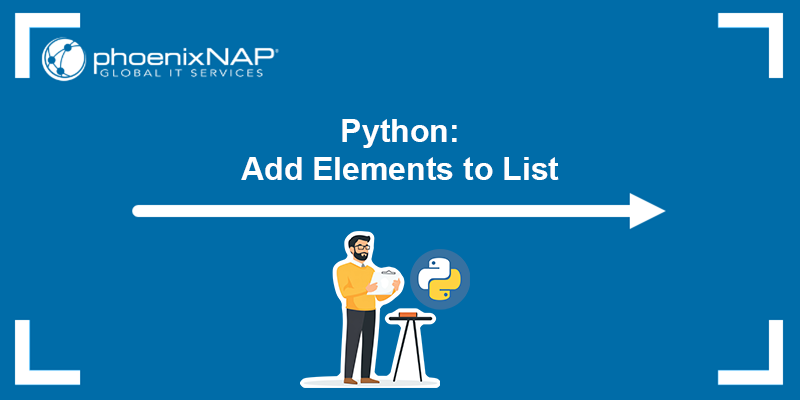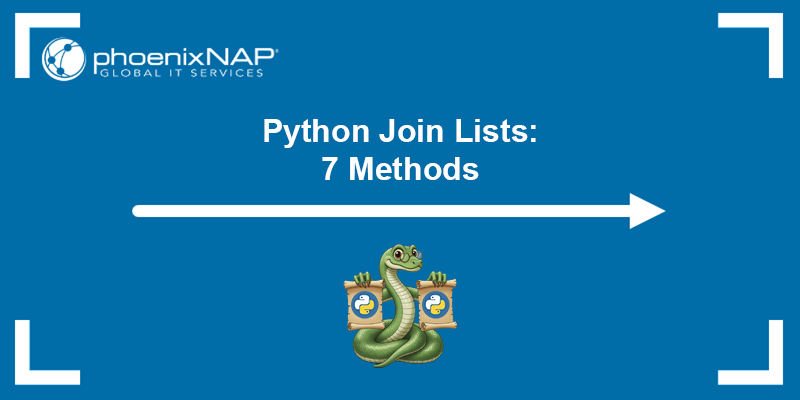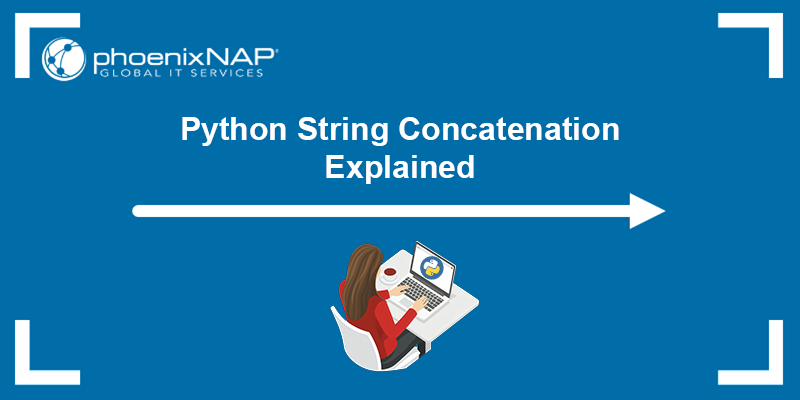Adding elements to a list is one of the most common tasks in Python development. It is used for dynamic data collection, such as storing results from API calls, processing user input, loading items from a file, or building a list of objects during a program's workflow.
For example, a script that tracks user activity might append new events to a list every time the user performs an action.
This tutorial will show different methods for adding elements to a list in Python.

Prerequisites
- Python installed (install Python on Ubuntu, Windows, macOS, and Rocky Linux).
- Access to the command line.
How to Add Elements to List Using Python
The sections below show different ways to add elements to a list. Each method includes a short explanation, a practical example, and steps to run the code in your environment.
Each example code can be run in a Python IDE or as a Python script, which is the method used in this tutorial.
Add Elements to List Using append()
The append() method adds a single element to the end of a list. Use it when you need to grow your list one item at a time, such as collecting log messages or storing new user inputs.
The following example shows how to append a value to an existing list:
1. Create a new Python file in your code or text editor.
nano append_example.py2. Paste the code below into the file:
items = ["apple", "banana"]
items.append("orange")
print(items)To append a list and make it a single nested element, use the following:
numbers = [1, 2, 3]
numbers.append([4, 5])
print(numbers)3. Save the file.
4. Run the file with:
python3 append_example.py
The output shows the original list expanded with a new fruit added to the end, demonstrating how append() grows a list one element at a time.
Add Elements to List Using insert()
The insert() method places an element at a specific position in a list. This method is helpful when you need precise control over ordering. For example, adding a new item to the top of a menu, placing a missing value in a sorted list, or inserting configuration options in the correct sequence.
Unlike append(), which always adds to the end, insert() lets you choose exactly where the new element goes.
Insert an Element at a Specific Index
Use this approach when you know the exact position where the element should appear. Python shifts existing elements to the right to make room for the new value, keeping the list order intact. This method is useful for maintaining sorted lists or injecting elements at known offsets.
Follow the steps below:
1. Create a new Python file:
nano insert_example.py2. Paste the following code into the file:
colors = ["red", "blue", "green"]
colors.insert(1, "yellow")
print(colors)3. Save the file.
4. Run the script with:
python3 insert_example.py
The output displays yellow between red and blue, showing how insert() shifts existing elements to make room for the new one.
Insert at the Beginning of the List
Inserting at index 0 places the element at the start of the list. This is useful when you need to prepend items, such as adding high-priority tasks to the beginning of a queue or ensuring new data appears first.
Follow the steps below to insert elements at the beginning of a list:
1. Create or open your Python script.
2. Paste the following code:
letters = ["b", "c", "d"]
letters.insert(0, "a")
print(letters)3. Save and run the file.

The output shows a before all other elements, demonstrating how index 0 prepends an item.
Add Elements to List Using extend()
The extend() method adds multiple items to a list by iterating over another iterable. Unlike append(), which adds a single item, extend() merges elements individually. Use this method when you need to add several values at once and avoid nested lists.
Extend List with Another List
Extending a list with another list is the most common use case. Each element of the second list is added to the original list.
Follow the steps below:
1. Create a Python file:
nano extend_example.py2. Paste the code below into the file:
fruits = ["apple", "banana"]
fruits.extend(["orange", "grape"])
print(fruits)3. Save the file.
4. Run the script:
python3 extend_example.py
The output shows both new fruits added individually, showing how extend() iterates over the provided iterable rather than nesting it.
Extend List with Any Iterable
You can extend a list using tuples, sets, or other iterables. Python adds each value individually, making it easy to merge different data types.
Follow the steps below:
1. Create or edit the previous Python script.
2. Paste the example below:
nums = [1, 2, 3]
nums.extend((4, 5))
print(nums)3. Save and run the file.

The output lists the new numbers added one by one, highlighting that extend() works with any iterable, not just lists.
Add Elements to List Using Concatenation
List concatenation creates a new list by combining two existing lists. This method does not modify the original lists unless you reassign the result. Use concatenation when you prefer immutable operations or want to build a new list from multiple sources.
Note: In performance-sensitive code, extend() is preferred.
Concatenate Two Lists
Concatenating lists using + creates a new list containing elements from both lists in order.
Follow the steps below:
1. Create a new Python file:
nano concatenate.py2. Paste the code below into the file:
a = [1, 2]
b = [3, 4]
result = a + b
print(result)3. Save and run the script.
python3 concatenate.py
The output displays a brand-new list containing elements from both lists, illustrating how + creates a newly-combined object.
Concatenate and Reassign
Reassigning the concatenated result back to the original variable updates it to the new combined list. To do so, follow the steps below:
1. Create or edit your existing Python script.
2. Paste the following code:
languages = ["Python", "Java"]
languages = languages + ["C#", "Go"]
print(languages)3. Save and run the file.

The output reflects an updated list with additional languages, showing that reassignment is required because concatenation does not modify the original list in place.
Add Elements to List via User Input or File Import
Lists are often built dynamically based on user interactions or external data sources. Python makes it easy to populate lists from keyboard input or files.
Add Elements Based on User Input
When processing interactive scripts, collecting user input and adding it to a list enables your program to work with flexible data.
Follow the steps below:
1. Create a new file:
nano input_list.py2. Paste the code below:
items = []
for _ in range(3):
value = input("Enter a value: ")
items.append(value)
print(items)3. Save the file.
4. Run the file and enter values when prompted:
python3 input_list.py
The output shows the three strings entered by the user, demonstrating how each loop iteration collects and stores input dynamically.
Add Elements from a File
Reading lines from a file lets you populate a list with data stored externally. This is useful for processing logs, datasets, and configuration files.
Follow the steps below to add elements from a file:
1. Create a file named data.txt and add some lines of text.
2. Create a Python script:
nano file_import.py3. Paste the code below.
elements = []
with open("data.txt", "r") as f:
for line in f:
elements.append(line.strip())
print(elements)4. Save and run the script:
python3 file_import.py
The output contains each line from the file as a clean element without trailing newlines, showing how files can be transformed directly into lists.
Adding Elements to Lists with Python: Errors and Debugging
List operations are straightforward, but mistakes can still occur. Understanding common errors helps you debug issues quickly.
The following are the most common errors with possible causes and debugging instructions:
IndexError: Out of Range. This error can occur when attempting to reference an index that does not exist. Whileinsert()handles out-of-range indices by placing the element at the end (when the indices are positive), referencing invalid indices elsewhere may trigger errors.TypeError: Non-Iterable Used with extend(). Theextend()method requires an iterable. Passing a non-iterable, such as an integer, causes aTypeError.- Unexpected Nested Lists with
append(). Usingappend()with another list creates a nested list. If your goal is to merge items individually, useextend()instead. ValueError: Invalid Literal During Type Conversion. This error happens when you convert input values before adding them to a list. For example, trying to convert "abc" to an integer before appending it will raise aValueError. Always validate or sanitize input before performing conversions.AttributeError: Using List Methods on the Wrong Data Type. This occurs when a variable is not actually a list, but you treat it like one - for example, callingappend()on a string or tuple. Print the type of your variable(type(value))to confirm it is a list before performing list operations.
Conclusion
This tutorial showed how to add elements to a list in Python in different ways, each suited for different scenarios. Choosing the correct method helps keep your code clean and efficient. With a solid understanding of these techniques, you can build dynamic, flexible data structures confidently in your Python projects.
Next, see how to find the average of a list in Python or reverse a list in Python.



